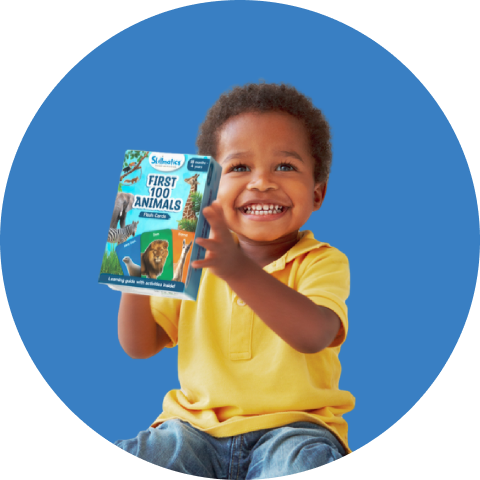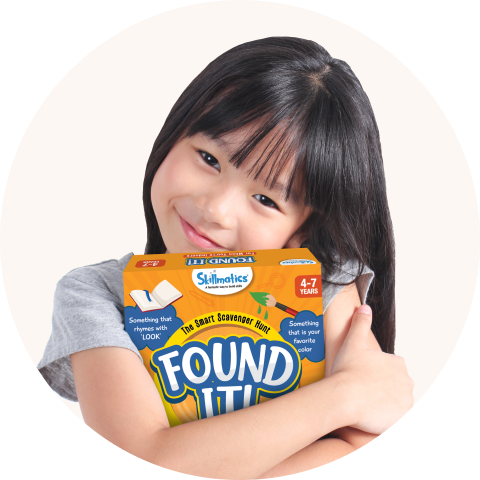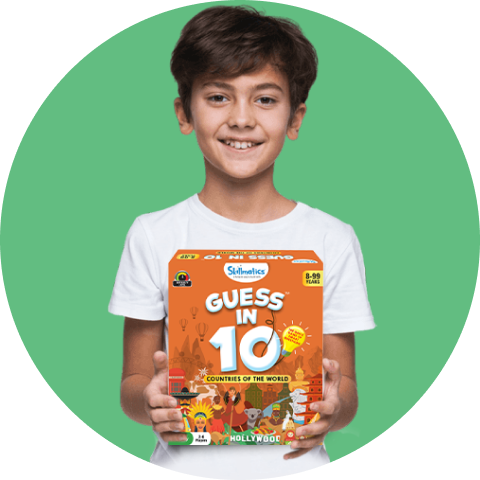No Products in the Cart
Featured Blogs

Thanksgiving & Ways to Practice Gratitude

An overview: the history behind thanksgiving
Thanksgiving is a national holiday celebrated in the United States. This day marks the arrival of the pilgrims on the Mayflower. The 1621 harvest feast was known as the first thanksgiving. Fascinatingly, these pilgrims were English puritans who wanted to break away from the Church of England. The area was originally inhabited by Native Americans. An epidemic, a few years prior, had wiped out the population. The pilgrims allegedly robbed corn and other supplies from Native American storehouses out of desperation to survive the winter. Their agreement led to the first thanksgiving feast. 250 years later, President Lincoln, declared Thanksgiving a national holiday in 1863. He saw this as a way of giving thanks and healing the wounds of the civil war. While this is a beautiful sentiment, it is equally important to remember the tensions between these two groups. After all, many people were slaughtered as a consequence.
The importance of gratitude
What does gratitude mean to you? Gratitude is why my family and I celebrate thanksgiving! My mum grew up outside of Michigan, and values keeping up this tradition with her family in the United States. Gratitude helps us take stock of what we do have, what we value and what we share. I’ve found that it helps us maintain perspective/offers new perspective. On this day, most people look at the world through a more altruistic lens. They think of those who are less fortunate or those in their community that need a little extra love.
Expressing gratitude
Thanksgiving makes us more conscientious about gratitude and expressing our gratitude. Whether it’s giving thanks while eating a delicious home cooked meal or sharing happy memories/things to be grateful for, thanksgiving is a wonderful day of coming together. It allows families to gather, friends to reconnect and thousands of hardworking men and women rest. It allows a space for reflection, introspection and camaraderieship. When reflecting upon this national holiday, I wanted to share a few ways to practice gratitude in our everyday lives. Expressing gratitude is scientifically proven to provide sustained happiness and to increase daily joy. Positive psychology is a field that was first discovered and founded by Martin Seligman. You can read more about him and his research here.
Ways to practice gratitude
I greatly enjoyed Seligman’s Positive Psychology Foundation course on Coursera through UPenn. After taking this course, I learned about a few new ways to practice gratitude which I will share here in my list below:
- The 3 good things exercise: Seligman shares 3 good things that have happened to him each night at dinner with his family. In my family, we discuss the highlights of our day at dinner and as children, at bedtime. Writing down these things affirms them.
- Keep a gratitude journal: This way you can go back and look at all the things you are grateful for whenever you’re upset and need perspective.
- Give thanks more frequently: If you’re grateful for something specific (e.g. a friend helping you with work, your child making you a thoughtful card), give thanks. Express to them why you are grateful and how it made you feel.
- Meditate: This is a zen way of reflecting upon all that you have to be grateful for. Taking deep breaths in and out makes you more aware of your immediate surroundings and creates a soothing atmosphere for introspection.
- Write thank you cards: Sometimes the people in your life don’t know how profound their impact has been on you. If you’ve appreciated someone or something they’ve done, write them a thank you card! (E.g. your child’s teacher, a local barista, etc.)
- Goal setting: Goal setting is a great way to experience and thus express gratitude. Nothing comes close to the feeling of accomplishment when you’ve achieved a goal. E.g. Training for a marathon, applying for a new job, etc.
- Get creative with giving thanks: Bake for someone you love! Gestures can say more than words sometimes. And a singular thoughtful gesture can go a long way.
- Volunteer in your community: Actions speak louder than words. If you’re grateful for something, keep the cycle going and give back to your community.
- Donate: If you can, support a cause you care about. Donating will help your favourite non-profits amplify their impact.
- Support those in need: Take up a project that addresses a specific concern. From mask making during the Coronavirus to cooking at a local soup kitchen, there are always ways to show your gratitude.

Understanding Autism

An overview
Each child is born differently and has their own unique strengths. Today, I’m going to discuss autism. Some might not know what it is and others might want to better understand what it means. For parents of autistic children, you’re doing a remarkable job! I have immense respect for the time, energy and patience you dedicate to your children. It is critical but difficult to make them feel loved, worthy and accepted. As a summer camp counsellor (art therapy and general-bunk) at Ramapo for Children, I have experienced firsthand the fatigue of keeping your energy levels up in order to match those of children on the spectrum. However, working with this population is life changing. As a result, Ramapo was transformative.
What is Autism?
Autism (ASD) is explained as difficulty with interaction, repetitive behaviour or speech. It is a neurological condition which influences both verbal and non-verbal communication. It also affects social cues. As it exists on the spectrum, it has a range. As per this article and my own observations at Ramapo,
Someone with Autism could demonstrate:
- Resistance to change – a preference of “sameness” over “otherness”
- Difficulty in verbal expression (resulting in the use of gestures)
- Echolalia (the use of the same word, multiple times)
- Extreme range of emotions (e.g. laughter turns quickly into tears)
- Preference of being alone (appears slightly aloof)
- Social-awkwardness (can’t read social cues easily)
- May shy away from affection (e.g. doesn’t want to be cuddled)
- Limited eye contact (sometimes no eye contact)
- Won’t respond to a traditional method of teaching
- Spinning objects/fidgets a lot (may use a fidget-spinner or resorts to stimming)
- Over-sensitivity or under-sensitivity to pain (both physical and emotional)
- Gross and fine motor skill development follow a different pattern
- Doesn’t respond to verbal cues (may misread verbal cues or is totally unresponsive)
What is Ramapo for Children?
Ramapo for Children is a residential summer camp in Rhinebeck, NY. It serves a range of children, including special needs children (those who have emotional, behavioural or learning challenges) across 250 acres of land! The Ramapo approach focuses on building a sense of community. Ramapo helps children model their behaviour to meet their aspirations “We believe that all children want the same things – to love, to feel valued and to form friendships.”
What School Could Be If It Were Designed for Kids with Autism
Similarly, Tracy Murray’s approach is reflected in this article by The Atlantic ‘What School Could Be If It Were Designed for Kids With Autism’. I love that Murray’s adoption of the ASD Nest program takes the principles of CFT (compassion-focused therapy) to boost self-esteem (typically lacking in autistic children). This in turn helps them better understand social cues! The clubhouse is a safe space for children to introspect and to self-regulate emotions, while the social clubs provide a great opportunity to develop communication and patience in a group setting! The best part of the program is how inclusive it is. It reminded me of BEEP (Brookline early education program) which I stumbled across on a work trip to Boston. Working in a special education capacity requires a great deal of empathy. It is evident that the Nest program reflects this trait.
My conclusion
To anyone who interacts with someone on the spectrum, I can only hope that you are kind, patient and empathetic. To parents, teachers, fellow counsellors and friends to those on the spectrum, some days will be easier than others and I can sympathise with this. Please don’t beat yourself up: apply that same kindness, patience and empathy to yourself as you navigate your relationship, your behaviour and your actions.

Sleep Better with 5 tips by our in-house Child Psychologist!

Sleep ‘enriches our ability to learn, memorize, and make logical decisions. It recalibrates our emotions, restocks our immune system, fine-tunes our metabolism, and regulates our appetite.’ I learned about the importance of resting well when my college roommate at Sarah Lawrence took a course with Professor Meghan Jablonksi on the Psychology of Sleep and Health. The course examined sleep through a historical, developmental, neuropsychological, physiological and cultural lens. Therefore, comprehensively giving its students an incentive to spend less late nights at the library and be more regular in following a routine sleep cycle.
Here are my tips on how to make sure that both you and your child are better rested:
-
Stay away from caffeine post noon – The consumption of caffeine (your daily tea or coffee, fizzy drinks, etc.) can actually delay your body clock. Caffeine blocks adenosine (your body’s natural sleep-inducing agent) and researchers at the Harvard Medical School have reported disruptive qualities (you will wake up multiple times a night) linked closely to the quality of your sleep (interrupted vs. uninterrupted).
- Exercise in the day to tire you out at night – As naturally energetic beings, humans require a sufficient level of activity in the day to tire them out at night. Exercise not only releases endorphins which put you in a better mood, it also physically exhausts you so that you can rest better each night!
-
Set a bedtime routine which you follow religiously – Your mind is trained to follow a routine! In fact, this is a part of “sleep hygiene” – a term referring to healthy sleep habits (such as reading or no screens before bedtime) which help you fall and stay asleep. Did you know that CBT (cognitive behavioural therapy) is used for people who have chronic insomnia?
- Clock the hours of sleep you get each night – The average human requires between 7 to 9 hours of rest per night. Try to better understand your sleep patterns and the impact they have on your quality of sleep and levels of energy the next day. Do you wake up feeling well-rested or do you feel groggy, slow and sluggish? If you said yes to the latter, that means you require more sleep! Children require adequate sleep to fuel their (naturally high) energy levels.
- Create your sleep space – Is the temperature cool? Are your blinds down so as not to let sunlight in? Or do you prefer leaving them up so that you wake up naturally when it’s light out? Monitor the conditions that you need to get your best night’s sleep.

Learning Styles & Advice for Different Learners

An overview
Learning styles for each child are very different. Through this blog we will go through learning styles and how think are linked to a child’s intelligence.
When I first learned about Howard Gardner’s theory of multiple intelligences, I felt a great sense of relief. Intelligence is often limited in its definition. People are in awe of those who excel at math or sciences and measure intelligence through test scores. Howard Gardner, an American developmental psychologist, proposed a theory wherein he detailed the different kinds of intelligence:
- Visual-spatial intelligence – read and write for fun, great at puzzles, interpret pictures well, lean towards the arts, good at pattern recognition.
- Linguistic-verbal intelligence – remember both written and spoken information, enjoy reading and writing, great at debate, can explain things very well, excel at languages and oral recitations.
- Mathematical-logical intelligence – superb problem-solving skills, think about abstract ideas, often conduct scientific experiments and are able to solve complex technological problems.
- Kinesthetic intelligence – are skilled at dancing and/or sports, very creative and often create art forms with their hands, have good hand-eye coordination.
- Musical intelligence – love singing or playing musical instruments, are able to recognize musical notes easily, superb memory for melodies, inherent knowledge about rhythm.
- Interpersonal intelligence – communicate well verbally and non-verbally, view situations from different perspectives, foster positive relationships with others, good at conflict-resolution.
- Intrapersonal intelligence – analyze their strengths and weaknesses well, enjoy the analysis of theories and ideation, strong self-awareness, understand their own feelings.
- Naturalistic intelligence – fascinated by botany, biology or zoology, catalogue information with ease, enjoy outdoor activities, care deeply about nature and the environment.
Learning styles vs. the theory of multiple intelligences
In fact, in 1981, Gardner was presented with the esteemed MacArthur Prize fellowship. In his bookThe App Generation, Gardner clarifies that the concept of learning styles is distinctly different from his theory of multiple intelligences.
Learning styles refers to an individual’s personality and learning preferences whereas the theory of multiple intelligences refers to diverse facets of intelligence and as Gardner writes ‘a mental computational power.’
Nonetheless, learning styles are easier to understand if one has first identified different forms of intelligence.
Advice for each kind of learner:
- Auditory and musical learners – Record lessons so that they can refer back to them at leisure. Listening back to what they may have already covered in class will help restate the concept. Teaching one another ‘verbally’ helps them with better recollection. They should be seated away from noisy areas to minimise distractions.
- Visual and spatial learners – They should be seated at the front of the classroom in order to maintain eye-contact and stay focused. They benefit immensely from going over visuals/graphics once more at home. Using a highlighter to colour code their notes or creating mind maps are other effective strategies. Writing notes or doodle will help improve their memory.
- Verbal learners – Verbal learners are avid note-takers and do well practicing something verbally. (whether that’s repeating something out loud until memorised or practicing a speech)
- Logical and mathematical learners – For people who gravitate towards statistics and taxonomy. Explain the reasoning behind concepts and give them extra opportunities to practice problem sets or logic exercises.
- Kinesthetics learners – Take strolls back and forth when trying to memorise a concept. Declutter desks and surfaces so that they have more space to move around.
- Interpersonal learners – Collaborate with friends/family and have them take up your notes. Create notes which can be share with friends.
- Intrapersonal learners – Conduct research and set the environment for independent study. Write out notes and reflect on the reasoning behind them.
Conclusion
Often learners will accommodate a range of learning styles and sometimes the best tactic is to integrate mixed learning styles!

How to Parent When Your Child has ADHD – 10 Tips:

An Overview
Attention deficit hyperactivity disorder (ADHD) is the mostly commonly diagnosed mental condition for children. Symptoms include: self-focused behaviour, interrupting, troubling waiting their turn, emotional upheaval, fidgeting, problems playing quietly, unfinished tasks and a lack of focus, forgetfulness, etc. Children with ADHD struggle to control impulsive behaviours. Typically, parents will opt for combined behavioural therapy or (depending on the case) medication. Here are 10 tips for parenting when your child has ADHD:
- The importance of structure – your child needs a routine and reasons to keep them incentivised to do these activities. Setting a structure which is well planned with incentives (e.g. x amount of TV time) will encourage them to follow it in the first place. Knowing what to expect is soothing for children with ADHD and it also helps keep their distractions to a bare minimum. Additionally, following a routine teaches responsibility.
- Break tasks down into steps for children with ADHD – tasks can sometimes appear daunting and unattainable. Breaking tasks down into steps will help your child achieve their goals without feeling put-off by the sheer complexity.
- Ask them to think out loud – by voicing their opinion out loud, your child will vocalize their actions and be compelled to think them through. This is a fantastic way to gain insight into their thought patterns and thus understand their behaviour.
- Declutter your surroundings – Minimising distractions in your immediate surroundings is key. Declutter your home and remove objects that your child might fidget with or get distracted by. Monitor factors such as temperature, brightness and sound as your child might be sensitive to any of these.
- Encourage them to exercise – when your child is hyperactive and has bountiful energy, exercise is a great way to release this energy. Exercising releases endorphins (mood-boosting hormones) thus reducing the risk of anxiety and depression. It also promotes concentration and focus and improves sleep patterns. Daily physical activity is thus especially important for children with ADHD.
-
Limit screen time as children with ADHD are easily distracted – setting limits on screen time is key. This way they can spend their time more productively doing other more engaging activities. Skillmatics write and wipe activity mats are a great place to start!
- Explain and give them choices (but not too many) – No child responds well to a command as opposed to a request. Give reasons for what you’re asking. Explaining your reasoning increases the transparency of your communication and establishes trust. This can help alleviate the worry, tension or confusion that commands often bring. It is critical for there to be mutual respect in your relationship with your child.
- Monitor your own language when communicating – Don’t use negative language with your child. The more you get frustrated with them and vocalize this – the less your child will want to listen to you. Positive and encouraging language will boost their self-esteem and disruptive behaviours will subsequently decrease.
- Pick your battles/let the small things go – This is a coping strategy for you! If every single disruptive behaviour causes you stress and results in a heated argument, it’s not doing you or your child any good. Let the small things go and pick your battles wisely.
- Lean on a therapist for support – Sometimes the solution is a highly-qualified therapist who can help you implement at-home strategies that are designed with your child’s specific needs in mind. Other times, you yourself need therapy because parenting your child has worn you down and you need a place to vent. Both options are completely acceptable – it takes courage to ask for help when you need it.

THE STORY BEHIND SKILLMATICS’ GLOBAL PRESENCE

Skillmatics is a direct-to-consumer brand that develops innovative educational products and games designed to help children build core skills, ranging from math and language to science and logic through systematic play!
Skillmatics is building a new age business model to disrupt a $100 billion global toy industry. The company has a vertically integrated supply chain with in-house manufacturing to rapidly iterate, launch and scale new products. Skillmatics also works with product design experts in the US, integrating best-in-class design expertise in learning aids, STEM products and educational gameswith India’s competitive manufacturing costs and content creation expertise.
We as a company sell globally across 25+ countries through our own website, various e-commerce marketplaces and through an international network of 3,000+ retail stores, with a primary focus on the North American market. Skillmatics started shipping products in July 2017, and we are also the first ever Indian brand to sell across Hamleys globally.
Being one of the fastest growing global companies to emerge from Asia. We recently raised $2 Million in funding from Sequoia Capital (world’s largest venture capital firm) to fuel our rapid growth.
Founder and CEO Dhvanil Sheth is a Chartered Account (All India Rank 27) who worked at Boston Consulting Group for three years prior to starting up. He has spent significant time during his BCG tenure working on consumer brands and the retail sector across Asia and North America. He was also recently featured in the Forbes 30 under 30 List of Top Entreprenuers in Asia.
CHECK OUT AN EXCLUSIVE INTERVIEW OF OUR FOUNDER WITH ET NOW BELOW!

DIY Projects – Maximize Creativity at Home

Maximize Your Child’s Creativity at Home
With quarantine and children at home due to the lockdown, free time has multiplied for your little ones! DIY (Do it yourself) projects are a great way to keep them occupied, for hours at a stretch and gives them the opportunity to maximise their creativity while at home. These activities are sure to keep them engaged and use items that you already have at home so that you can safely shelter in place (and minimise the need to step out).
10 ideas for DIY projects using household supplies:
- A Cue Tip Hedgehog – All you need is white clay, some cue tips and a black sharpie (you can even create a Pinterest board for inspiration).
-
Origami Flowers – Create your own flower bouquet (Mother’s day is around the corner after all). We offer other free & downloadable activities for it too.
-
Paper Plate Basket for Baked Goods – Fold a paper plate into a paper basket for your baked goods! See here for the folding technique. You can use this for homemade brownies and cookies.
-
Pencil Organizer – Using the inside cardboard liner of a toilet paper roll and some excess cardboard from another roll) – to use for your crayons/pens/pencils as you keep busy with our Skillmatics Pattern Puzzles, downloadable for free here.
-
Seed Holders – Plant some seeds in an empty egg carton and soon you’ll have indoor plants! See this article for more instructions.
- A Puppet Theatre – create a puppet theatre! Using old felt/fabric you can create the costumes and the people can be cardboard cutouts or sock puppets.
- Bottle Cap Garden Worm – Collect bottle caps and then paint them green. With the help of an adult, pierce each bottle cap in the centre and then use a sturdy thread/string to tie together the bottle caps. Voila – a garden worm. Add on eye stickers if you have any or if not, draw out the eyes and stick them on separately. If you want to add a head, a corkscrew works excellently.
-
Tissue Box Monsters – If you have an empty tissue box and some old table tennis balls (pom poms or anything round that you can throw), this is a fun and cute activity for your children! Once they build the monster, they can catch its food accordingly!
- Thumbprints Tree – Using their thumbprints as the “leaves” of the tree. Let your children map out their family trajectory. They can even add family photos/old stamps or other memories (e.g. a ticket stub or letter).
- Quarantine Cloth Mask – The how-to is a part of our Stay at Home Safety Kit.
We hope that both you and your child enjoy these safe and simple home-based DIY activities!

Cooking for or with Children – 10 resources you need!

An Overview:
Perhaps you feel as if you can’t cook and recipes never turn out right? Or you’ve been cooking and your kid loves to help but you need help facilitating this? Either way, we have a guide that covers parents and children beginning to cook, intermediate level cooks and resources for more advanced cooking! This article is for those who are already cooking for/with children and those who want to start.
For some parents, home cooked meals are a necessity. After all, cooking at home is less expensive than continuously eating out and much more nutritious. For other parents, they may want to home cook meals but time is of the essence… they feel like they don’t have it and rely on frozen foods. For another category of parents and their children, cooking is a luxury – they have the time and the resources to do it and find it therapeutic. This is an important distinction. And, I want to acknowledge each distinctive category so that those of you reading this blog feel heard.
A case for home cooking
As i mentioned in my overview, cooking at home is less expensive and more nutritious than eating out. Home Cooking allows you to be in control of your dietary restrictions and preferences. Cooking at home allows you to maintain a balanced diet and be more aware of portions. Common excuses like “It’s too time consuming” or “I’m not a good cook” can put you off. The resources below (chefs, recipes and community cooking) will provide otherwise!
10 Resources you need
1. Chef Nadiya Hussain’s "Time to Eat” on Netflix:
Nadiya wants to help families who are short on time cook healthy yet cost-effective meals. She says “Busy lives deserve delicious meals” and brings this same zest for food onto her BBC cooking show. The show reveals what goes on behind the scenes and what it takes to prepare the food that is so readily available to us at supermarkets. Hussain shares her time-saving tricks and top cooking hacks for speedy preparation yet fresh flavour.
2. The Food52 Community:
Food 52 is one of my favourite online cooking resources. It is a website dedicated to thousands of recipes contributed by a community of over 13 million people! The recipes are cooked by the editors and are test-kitchen approved, guaranteeing success each time (and wasting less resources!). In 2013, Food 52 launched their own shop through which members of the community can purchase top-notch kitchen utensils and homeware goods. My favourite section is the “Genius Recipes” tag which features recipes that are quick, easy to make and memorable.
3. Chef Yotam Ottolenghi’s Cookbooks:
Simple and Plenty are my top two picks. Ottolenghi’s restaurants are an absolute treat. His food is brilliant for the vegetarian and vegan palette but he also does a lot of local and seasonal cooking (e.g. seafood). He is a wizard in the kitchen and his introduction to the Middle-Eastern and Mediterranean palette (spices such as Zaatar) is unparalleled.
4. Smitten Kitchen’s Blog:
Deb Perelman is the author, chef and creative mind behind Smitten Kitchen. She succinctly describes her blog as “fearless cooking from a tiny kitchen in New York City.” Deb’s recipes are neatly organised into tabs on the website. These range from ‘5 ingredients or fewer’ to ‘Thanksgiving’ and ‘Date Night’. She has it all. I love the Smitten Kitchen brownie recipes, there are so many.
5. BBC Good Food:
I’m a big fan of the BBC Good Food magazine. The food is always beautifully styled, visually appealing, exquisitely photographed and triple tested! Recipes are well explained and thus easy to follow. As a result, I like their suggestions for Kids’ cooking recipes. This list includes a simple stir-fry, easy banana pancakes and vanilla cupcakes amongst other recipes. These recipes are very easy to follow.
6. Taste of Home:
This website offers a similar taste of home: comfort. The range is extraordinary. Those who are just beginning to cook at home, cook with their kids or supervise their kids’ cooking can use these recipes. While those with a more advanced repertoire can use the ‘Best-Loved Grand Prize Winning Recipes’ found here.
7. NYT Cooking:
Recipes selected throughout the week by Sam Sifton, the food editor of the New York Times. Their quarantine cooking section offers a refreshing take on how to do easy, comforting and free. Check it out here.
8. (MY favorite) Indian (pastry) chefs:
Karishma Sakhrani was on MasterChef and makes the most delectable food. As I tend to have more of a sweet tooth, I love her site for it’s blog element. My top recipes? Definitely her double-chocolate granola recipe and the heavenly avocado, strawberry, feta salad on her instagram. And, of course, Shivesh Bhatia. His website ‘Bake with Shivesh’ is inspiring because of its humble beginning and Bhatia’s lack of formal “pastry chef” training. His eggless baking tips make his content more relatable to the Indian palette. And his instagram feed is gorgeous! Think vivid colours, delicious recipes and step-by-step instructions.
9. Molly Yeh’s cooking show Girl Meets Farm:
She is hilarious, honest and innovative with her use of farm ingredients in the kitchen. Yeh is an American cookbook author, blogger and host of the popular Food Network run tv-show. She has Jewish and South-Asian roots and incorporates the cultural balance of growing up with this heritage into her Mid-Western life. Her cakes are a gift to mankind. I know that probably strikes you as an exaggeration but she’s your best bet when experimenting with a recipe that you’ve never tried before. Why? Her cakes are always sublime! I love her chocolate hazelnut cake with hazelnut buttercream(nutella just got a level up) and her classic yellow cake with chocolate frosting. I made both recently for family birthdays and they were a hit.
10. Massimo Bottura’s episode on Chef’s Table, Netflix:
Massimo Bottura is an exceptional Italian chef, author and humanitarian. His episode on Chef’s Table is nothing short of soulful as he explains his Italian heritage and trajectory to New York where he met his wife. He owns Osteria Francescana one of the most renowned restaurants in the world: A three-star Michelin. Bottura’s ‘Kitchen Quarantine’ series on his instagram page reveal his favourite recipes and down-to-earth sense of humour.
Conclusion
Although I am glad that quarantine has us more proactive in the kitchen than ever before… it is important to consider food inequality. This article by Nikita Parikh, TFI alumnus, highlights the ‘Social Distance between Me and You.’ Similarly, the work by Indian Non-Profit Khaana Chahiye highlights the need for equitable food distribution. Please be conscious of minimising your food waste. A contribution to your local soup kitchen or kindness in your community can go a long way.

Help Your Kids Say Goodbye to Boredom

An Overview
The Oxford English Dictionary (OED) defines “bored” as ‘feeling weary and impatient because one is unoccupied or lacks interest in one’s current activity.’ Given the pace at which life is moving today there are scarce opportunities for boredom. Unmistakably, life has slowed down considerably since the lockdown. That being said, those who have children will agree that their kids still lament that they are “bored”.
Children often confuse restlessness and boredom. Boredom can result from sheer fatigue or simply not knowing what to do next. It can emerge from repetitive activities because of the lack of imagination or excitement that accompanies them. This is easily remediable. A social malady, boredom is curable through effective parenting, a positive outlook and creativity!
Parents must teach their children that there is no need for boredom. There are several ways to occupy one’s time that I will list below.
My A to Z’s for Boredom Busting :
A – Activity Mats (write & wipe) – Skillmatics’ Animal Kingdom activity mat!
B – Boredom Buster is another great activity mat by Skillmatics to keep your child occupied.
C – Climb a tree – Not only does it offer a unique vantage point, it’s a great way to genuinely connect with nature and get over this modern phobia of dust (which is justifiable if you’re allergic but not, in my mind, if you’re dust-allergy free).
D – Dots & Mazes (a memory game by Skillmatics) will improve social & communication skills, logical reasoning, decision making and writing through a fun and engaging activity.
E – Exercise – Swimming, cycling, running and skipping are great ways to stay active.
F – Friends – Connect with your friends (e.g. set up a virtual play date or phone call).
G – Gardening – Grow your own plants (e.g. basil leaves or fresh thyme) or get gardening.
H – Help out at home – Helping set the table, cook meals for your family, a neighbour carrying their groceries, your younger sibling with their homework, etc. Best and easiest way to say goodbye to boredom!
I – Inspire those within your community – volunteer to help the elderly or homeless.
J – Jogging – Go for a jog! This is a superb way to get your heartrate up.
K – Kitchen activities – Cook a family recipe or get creative in your kitchen.
L – Learn – a new language or skill set using the Duolingo app or an at-home activity kit.
M – Music – this is always a fun way to unwind! Sing or dance on your own or with family.
N – Netflix – Yes, your kids are allowed some occasional age-appropriate TV time.
O – Outdoor games – Cops and robbers (or Chor-police in India), Tug of war (great for gross motor skill development) or Tag (Catch & cook in India) are just a few options!
P – Paint – A canvas, an old wooden bench, a stool, a large chart paper, a pot, etc.
Q – Quiet time – Take a few minutes out of each day to meditate. The Calm and Headspace apps take you through guided meditations with a range of bedtime and work time options.
R – Read a-loud – Reading aloud helps with phonics and language development.
S – Science experiments – Create your own Slime at home using baking soda.
T – Treasure hunt – Use chocolates/candy at home as a treat and create your own clues!
U – Understand your feelings – share these in your own private diary or journal.
V – Visualize – Your goals and what you want to achieve in the future.
W – Walk – Indoors up and down your hallway or even better, outdoors if possible!
X – X’s – X is often used to symbolise a kiss. Email those you love and sign off with an x.
Y – YouTube tutorials – Use a recipe from the Millennial Moms or Tasty channel.
Z – Zen: Stay zen by practicing yoga (see this article for app recommendations).
save200-collection












